Ask a question from expert
Physics Assignment: Law of Conservation of Momentum
21 Pages4380 Words362 Views
Added on 2020-05-28
Physics Assignment: Law of Conservation of Momentum
Added on 2020-05-28
BookmarkShareRelated Documents
Ascertaining the limitations of the law of conservation of momentum How does the change in mass affect the momentum loss in a toy car being ridden ona wooden platform provided the temperature and applied force remains constant?Subject: PhysicsWord Count: 37441
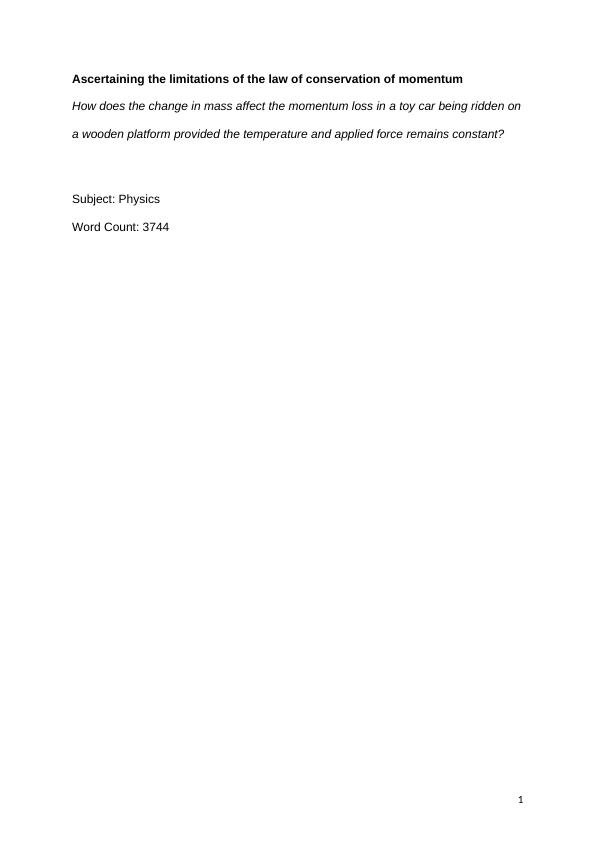
AbstractThis report hereinafter dwells on experimental results to determine the effect ofmomentum loss given a change in weight of colliding objects. In this case, two toycars are used to determine the momentum losses. Normally, the focus has beenbounded on systems in which the net external force is often zero for momentum inthe system to be conserved. However, this report provides an experimental enquiryinto how the same would be experienced in an unbounded system where the netforce is no longer zero as the final momentum is less than the initial momentumcourtesy of frictional forces. The cars were allowed to move and collide on a woodenplatform. The obtained results were stunning. The momentum loss increased asmore weight was being added. This was due to frictional forces that were directlyproportional to the normal force. It should be noted that since the system washorizontally oriented, and from Newton’s third law of motion, the normal force wasequal in magnitude to the effective weight of the toy cars. However, in future, in orderto obtain a more accurate finding, the parameters of the system must be redefined;for instance, it is only kinetic friction which was considered whereas even staticfriction has a huge bearing in the final total momentum of the system.Word Count: 2192
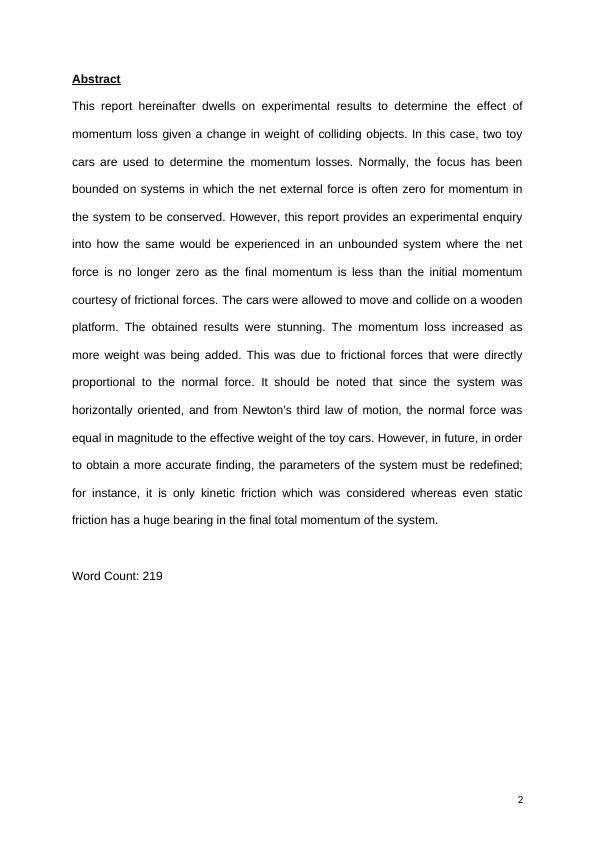
Table of ContentsAbstract........................................................................................................................................................2Introduction.................................................................................................................................................4Background Information............................................................................................................................5Research Question......................................................................................................................................7Initial Experimental Design .......................................................................................................................7Modified Experimental Design .................................................................................................................8Theoretical Hypothesis...............................................................................................................................9Variables.......................................................................................................................................................12Experimental Procedure........................................................................................................................... 13Data collection ...........................................................................................................................................15Analysis of data ..........................................................................................................................................18Evaluation and Further Study ..................................................................................................................18Conclusion .................................................................................................................................................. 19Works Cited........................................................................................................................................... 213
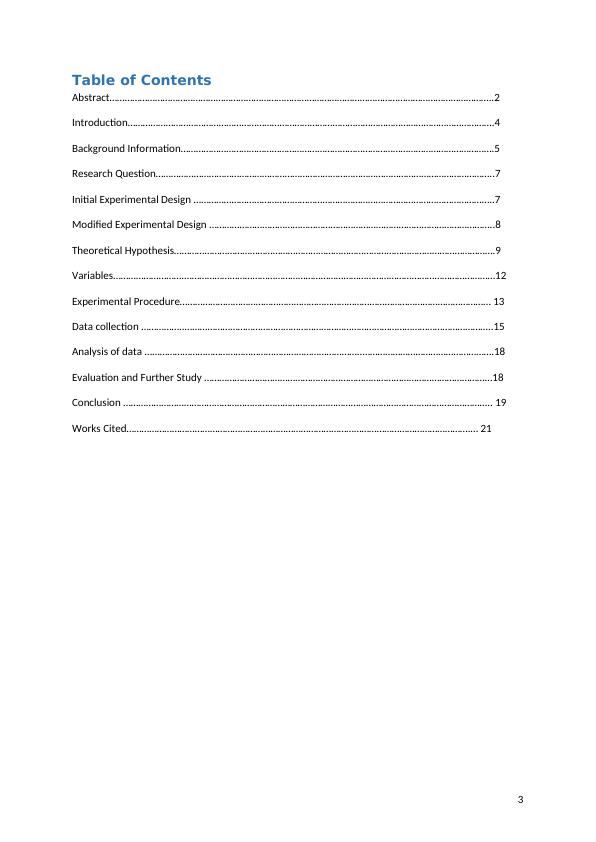
IntroductionFundamentally, the law of conservation of momentum is premised on two postulates:that mass is indestructible as well as energy hence it states that net change inmomentum is always zero, that is, momentum before collision is equal to momentumafter collision but only in an isolated system. However, more often, little regard isgiven to the non-isolated cases. This paper will focus on the determination of theeffects of momentum changes with respect to external forces in a non-isolatedsystem. The investigation is done via an experiment. This paper will establish thephysical relationship between these two; the momentum loss and the mass changein a non-isolated system.Admittedly, in real world, the existing classical Physics concepts in this arena may beinadequate hence need to develop further the concept of momentum loss in a non-isolated system in the real world. For instance, frictional force which oftencounteracts the applied force for the object to lose its momentum may have differentsurface coefficients hence deviation from the practical scenario. Consequently, evenin a similar condition of temperature and force application, the motion of the object atthe points of contact between two surfaces may behave differently. The fact thatthese forces are present in the real world and there being no relationship betweenthe two has incited me to look into how momentum changes when the normal forceof the objects changes hence, frictional force as well. This gives rise to the researchquestion “To what extent does changing the weight of an toy car (ranging from 0 to100 grams in increments of 20 grams) going on a wooden surface affect the loss inmomentum (in kgms −1) with respect to the law of conservation of momentum, giventhat the surface, temperature and force applied on the object remains the same?”4
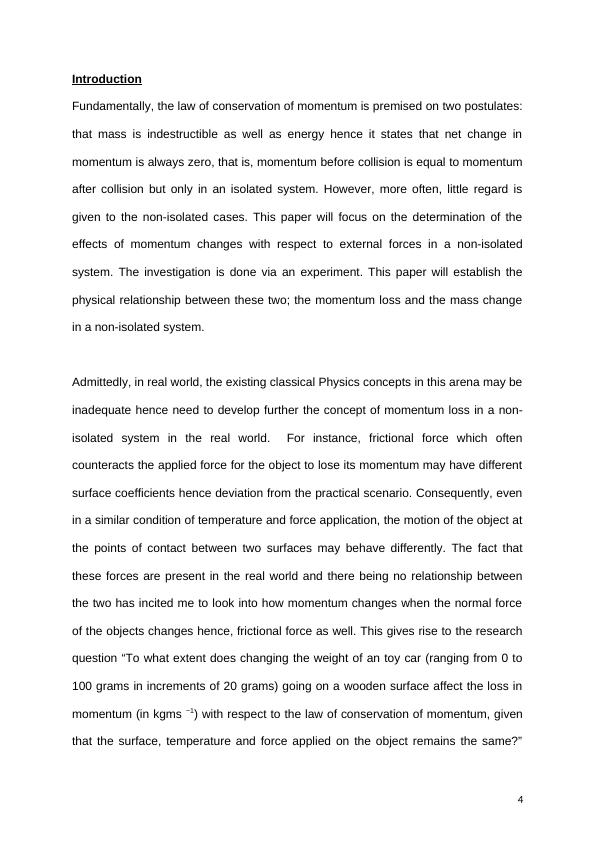
This experiment will only take into account friction as methods to measure otherexternal forces are not within the scope of this research paper.Background InformationThe conservation of momentum is a fundamental concept of Physics. Momentum isdefined to be the mass of an object multiples by the velocity of the object and isequivalent to the force required to bring the object to a stop in a unit length of time. Sir Isaac Newton went further to prove that the rate of change in momentum isdirectly proportional to the applied force and it takes place in the direction of theapplied force. For any array of several objects, the total momentum is the sum of theindividual momentum. This is the classical approach in determining the totalmomentum for a system with many components. The conservation of momentumstates that, in an isolated system, the amount of momentum remains constant;momentum is neither created nor destroyed, but can only change through the actionof forces as described by Newton’s laws of motion. As pointed out earlier, conservation of momentum is premised on two distinctuniversal postulates; that: we can never destroy mass and neither can we do thesame to energy. Notably, momentum is a vector quantity, having both a magnitudeand a direction just like force. In a complex system, analysis of momentum wouldoften be done by resolving the individual momentum using the static and dynamicequilibrium equations. But this is only restricted to a bounded system so thatmomentum would only be conserved in all three physical directions at the same time.5
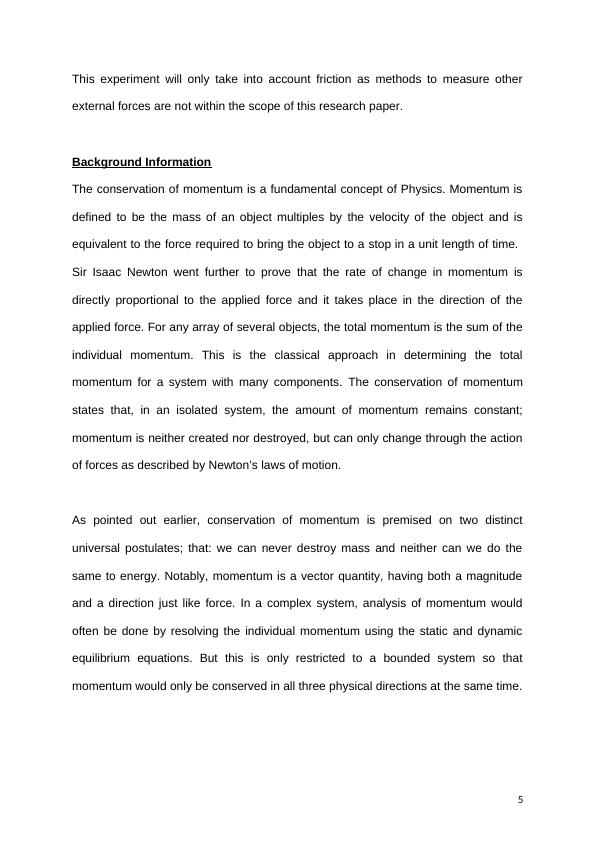
Momentum loss springs from the systemic losses orchestrated mainly by thefrictional force factor. Now, friction is that force exerted by the surface of an objectwhen another object moves against it. Friction occurs in the direction opposite tomotion, and because of this, it is a force that affects the motion of objects. When abox is pushed across a surface, friction works against the box in the directionopposite to the box’s motion. This happens because when two objects rub together,it sets off attractive forces between the molecules of the objects. For this reason,friction can occur between any two objects. As friction results from attractive forces,the amount of friction depends on the materials of those two interacting. For thisreason, all two surfaces have different coefficients of friction. Frictional force iscalculated by multiplying the coefficient of friction and the normal force in Newton.However, for every two objects there are two coefficients of friction: static andkinetic. Static friction is that which occurs when the object is at rest it preventsmotion instead of slowing it down. In all cases the force needed to overcome staticfriction is much larger than the force needed to overcome kinetic friction (Cook, C.L.). While kinetic friction is that which occurs when the object is moving and works toreduce the motion.Due to the fact the law of conservation of momentum only holds true when theobjects are in an isolated system, when friction is taken into consideration,momentum is no longer conserved. This is because friction is an external force andwhen it is present energy is lost due to the frictional forces which the object willhave to overcome and since the formula for momentum is the product of theobjects mass and velocity the momentum before will no longer equal themomentum after.6
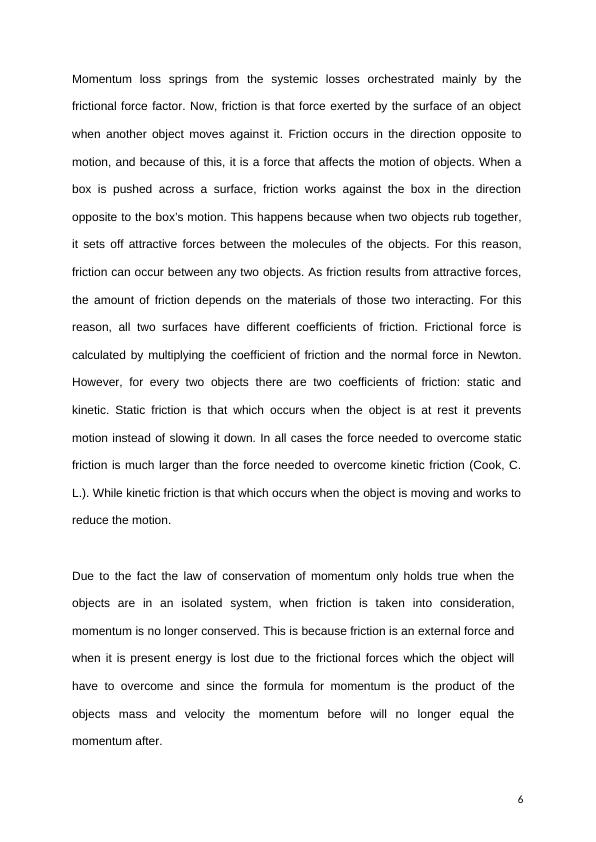
End of preview
Want to access all the pages? Upload your documents or become a member.
Related Documents
Physics Solutionlg...
|13
|1775
|424
Conservation of Momentum and Energylg...
|10
|829
|22
Assignment Multiple Choice Question and Answer Physicslg...
|7
|1096
|19
An organized body of knowledgelg...
|8
|1299
|22
Physics science Assignment PDFlg...
|8
|1473
|19